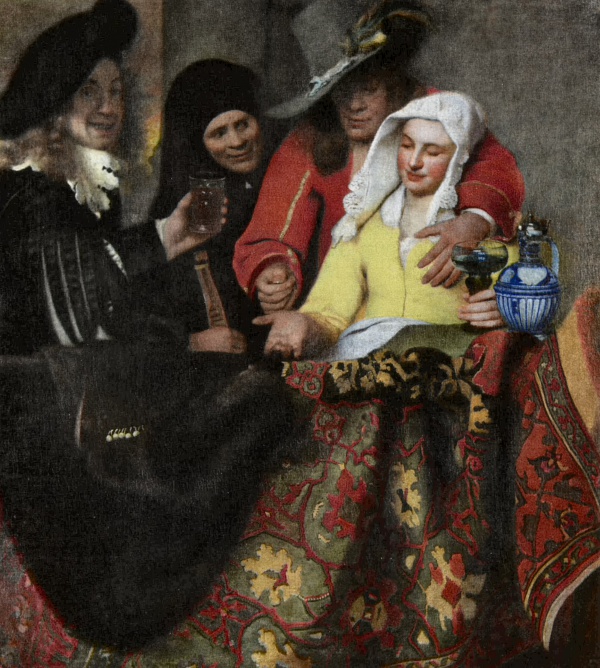Facts About The Procuress
"The Procuress" is an intriguing oil-on-canvas painting by Johannes Vermeer, created in 1656. It is significant as Vermeer's initial venture into genre painting, depicting a scene from contemporary life, which may be set in a brothel. This artwork is currently housed in the Gemäldegalerie Alte Meister in Dresden.
A distinctive feature of this painting is that it is one of only three works that Vermeer signed and dated. The painting portrays a woman dressed in black, presumed to be the procuress, alongside a man believed to be a self-portrait of Vermeer. Art historians suggest that Vermeer may have been influenced by other artists such as Gerard ter Borch and Dirck van Baburen. Notably, this piece deviates from Vermeer’s usual style through its use of darker tones and expressions.
Vermeer’s meticulous attention to detail is evident, with elements such as a Westerwald pottery jug, a Uşak kelim rug, and a cittern included in the scene. The history of the painting is equally fascinating. It was once part of the Waldstein collection in Dux before being acquired by August III of Poland. Over the years, it has been featured in various exhibitions, including one in 1980 at the Staatliche Museen zu Berlin.
There has been some confusion with other paintings bearing the same title, and at one point, a counterfeit version attributed to Vermeer emerged. This forgery was later identified as the work of the notorious forger Han van Meegeren.
In 1968, a technical analysis by Hermann Kühn revealed the pigments Vermeer used, such as ultramarine, lead-tin-yellow, and smalt. The painting's composition and execution have sparked extensive discussion among art historians and critics. Some interpret it as a psychological portrait of Vermeer’s family, while others view it as a commentary on the societal themes of the period.

 Poland
Poland